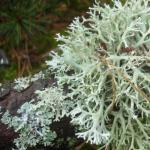
Outdoor plants that love the sun. Perennials for sunny areas
Under the sun's rays, perennials bloom with special splendor and beauty. The choice of their species and varieties is large enough so that every gardener can find plants of the color, shape and flowering period that suit him.
The best places for many abundantly flowering garden perennials are open to the sun.
Here such noble long-flowered flowers as lilies, peonies and phlox can show themselves in all their glory. They tolerate short-term daytime shade quite calmly, but longer shading and even openwork shade from trees and shrubs seriously affect their prosperity.
Large, lushly flowering breeding varieties of sun-loving perennials are especially sensitive in this regard. For them, the most optimal are ridges with fertile and sufficiently moist soils.
The design of sunny areas depends entirely on your taste and, of course, on the actual capabilities of your garden. Small flower beds in the front garden can be designed no less impressively than a ridge stretched along a garden path, a “ribbon” of perennials along the border of the garden, or a flower island in the center of the lawn.
In any case, it is very important to skillfully combine plants according to their growth. Such tall and lush-flowering crops as rosemary, mallow and lupine are most advantageous in the “far” section of the flowerbed. Their flower stalks will rise above the shorter crops in the foreground, which in turn will cover the bases of their shoots.
To create a beautiful transition between a ridge open to the sun and a lawn, terrace or garden path, compact cushion-shaped perennials are very suitable - bush aster, blue carnation or Carpathian bell. They will reliably cover the soil with a dense leaf cover, which will decorate the edges of the ridges at the time when flowering ends.
The most important advantage of sun-loving perennials is their colorful outfit. Their multicolor arrangement looks best against a calm background of trees and shrubs.
To achieve certain color combinations, it is necessary to take into account the periodicity of development of each individual crop.
Peak flowering of perennials occurs from June to August. At this time, such large yellow-colored “sun worshipers” as rudbeckia, heliopsis, coreopsis, helenium, as well as juicy red monarda And Kniphofia.
Calm white and blue notes are added to this color scheme by various types and varieties of bluebells and spurs (delphinium).
|
|
|
|
|
|
|
|
|
|
|
|
|
|
|
|
You can extend the flowering season in a sunny garden with the help of such attractive autumn-flowering crops as sedum, garden chrysanthemums or autumn asters.
Most perennials will bloom again in the fall if they are pruned in a timely manner after the main flowering period. Such plants include delphinium, stenactis, catnip And scabious.
The choice of spring sun-loving perennials is somewhat smaller. They bloom in April rezukha, meadow lumbago And Adonis. They are joined in May day-lily, catnip And peony.
You can enrich your spring palette with such bulbous plants as narcissus, tulip And grouse. Since bulbous crops become unattractive after flowering, they should not be planted in the foreground of garden beds.
An easier-to-maintain option for a large flower garden is a sunny lawn. Wild perennials - cornflower, yarrow, meadow sage- thrive here in colorful company with herbaceous plants. Such lawns are sown with a special seed mixture or individual crops are planted on an existing lawn.
|
|
|
|
|
|
|
|
|
|
|
|
|
|
|
Flowerbed of sun-loving perennials
Soft and delicate colors dominate this perennial garden.

1. Miscanthus - Miscanthus sinensis.
2. Annual three-cut malope, or hole - Malope trifida.
3. Hybrid yarrow variety - Achillea "Schwefelbluete".
4. Campanula lactiflora.
5. Perovskia wormwood - Perovskia abrotanoides.
6. Annual hybrid of verbena - Verbena.
7. Sedum-squeaky, or hare cabbage - Sedum telephium (before flowering).
8. Decorative round-headed onion - Allium sphaerocephalon.
9. Foxtail featherweed - Pennisetum alopecuroides (before the appearance of flower stalks).
10. Louis's wormwood - Artemisia ludoviciana.
11. Hybrid variety of yarrow - Achillea "Lachsschoenheit".
12. Hybrid shrub aster - Aster dumosus (before flowering).
13. Hybrid coreopsis - Coreopsis.
14. Fassen's catnip - Nepeta fassenii "Six Hills Giant".
15. Himalayan geranium – Geranium himalayense.
16. Annual fragrant tobacco – Nicotiana.
17. Santolina chamaecyparissus.
Examples of compositions from sun-loving perennials
|
Cascades of flowers Thanks to well-thought-out planting, geraniums, sedums and mantles get as much sunlight as the tall mallow (Malva sylvestris) in the background. |
Warm colors of autumn The delicate and soft palette of Echinacea purpurea, Helenium and Aster amellus hybrids is simply delightful! |
Sunbathing Daylily (Hemerocallis), gaillardia (Gaillardia) and loosestrife (Lysimachia punctata) simply glow in the sun. |
Beautiful sun-loving perennials
Large-flowered perennial with long candle-shaped inflorescences; supports are desirable; re-blooming after pruning. The erect peduncles of spurs, densely strewn with bells, are spectacular in any corner of the garden.
Phlox paniculata- long-lasting large-flowered perennial with dense pin-shaped peduncles; re-blooming after pruning. A pleasant aroma and lush floral appearance make phlox one of the most popular garden crops.
An unpretentious large-flowered perennial with basket-like inflorescences; produces root suckers; pruning increases the flowering period. If you provide rudbeckia with enough space, it will gradually form dense flower thickets.
An abundance of star-shaped inflorescences above dense, dark green foliage; good ground cover plant. The warm lights of the autumn bush aster (Aster dumosus) glow in the garden until October.
Catnip- long, arched shoots with numerous small two-lipped flowers; loose bushy growth. It is not difficult for him to find company. Regular pruning maintains the compact shape of the bush.
Oriental poppy (Turkish)- large cup-shaped flowers of luminous color; short flowering time; spreads by self-seeding. It is loved for the freshness of its bright flowers and the expressiveness of its seed pods.
A hardy, large-flowered perennial with sunflower-like inflorescences on long, straight stems and long-lasting flowers.
Lavender- a compact, long-lived perennial with evergreen pubescent foliage and fragrant flowers. Thanks to its woody stems, lavender is classified as a subshrub. She is very good in borders.
Day-lily- large-flowered perennial with star-shaped or bell-shaped flowers; grows to the size of a large bush.
Gaillardia- attractive multi-colored ray-shaped inflorescences on strong stems; Protection from cold weather is recommended.
| Plant name | Image (clickable) | Height, cm. | Flower coloring | Flowering time |
| Spur high | 100-200 | Blue, purple, white | June-July, September-October. | |
| Phlox paniculata(Phlox paniculata) |
At the dacha you can do without some frills, but without a bright, sunny flower bed that creates a positive mood, dacha life will lose its main flavor. When creating sunny flower beds, you need to ensure that each of the plants receives its share of light. It is very important to combine plants correctly, selecting them according to their height. Then tall specimens will effectively rise above low-growing crops, creating an advantageous background for them.
Bright, light, equipped with unique silk petals, similar to the clothes of eastern sultans, Turkish poppy (Papaver orientale) will perfectly complement any sunny flowerbed. Its surroundings can be designed not only in scarlet or purple tones; poppies go well with flowers that are white or yellow in color. Exotic beauty makes poppy a very popular plant for flower beds. But she's not the only one. This is the most unpretentious plant. If the poppy receives enough sunlight, it can grow for years without replanting and in any soil.
Turkish poppy is a perennial, its straight bristly stem can reach a height of 80-100 cm. The basal leaves of the poppy are large, pinnately dissected, up to 30 cm in length, the stem leaves are smaller. Single flowers up to 18 cm in diameter have a fiery red color and a black spot at the base
Poppies can not only be scarlet; there are garden forms with orange, pink and even white petals. There is a special double variety of plants of this species that have bright red drooping flowers. This plant blooms in late May and early June, after which it is better to remove its yellowing leaves. Holes in the flowerbed should be covered with asters that bloom in autumn. And at this time the poppy forms a small rosette of leaves that will have to spend the winter. Maca can be accompanied by yarrow and oregano.
The unique aroma of blooming lavender
An excellent frame for a bright sunny flower bed will be created by lavender (Lavandula) - not only an ornamental, but also a medicinal aromatic plant. Those who managed to see lavender at the peak of its flowering will never be able to refuse its attractive fresh aroma and delicate purple flowers. Lavender blooming is a stunning sight, especially if its plantings cover a large area. This small perennial is always ready to cover edges and borders. Evergreen lavender is a bush with narrow leaves that have a delicate silvery tint. Its inflorescence has the shape of a spike.
Butterflies and bees really love the aroma emitted by lavender honey plant. The plant is unpretentious, it is drought-resistant and growing it in regions with warm and long summers is not particularly difficult.
Lavender flowers can be not only lilac (from soft lilac to deep purple), but also pink, blue and even white. The purple variety of lavender is often combined with bright “sun lovers” of positive yellow or orange coloring. If the frame of the composition is lavender, for example, purple coneflower looks wonderful in it. The flowering time depends on the type of lavender. Some varieties bloom from May to July. At the end of summer they may begin their second flowering phase. Usually the plant does not live longer than ten years, so a replacement should be prepared in advance.
The Latin word "lava" means "to wash." The plant got its name for its antiseptic and hygienic properties. Even in ancient Rome, lavender was used during laundry, cleaning and bathing.
Unforgettable thin-leaved peony
In the 60s, this plant could be seen in many city flower beds. And now, after so many years, the thin-leaved peony (Paeonia tenuifolia) is again at the peak of popularity. Voronets, which is what this plant is called in Russia, most often blooms in early May. Usually by the May holidays it already pleases everyone with its blood-red inflorescences. Its delicate fragrance is pleasantly woven into the spring breeze and spreads far throughout the area. Once in nature, these flowers could be found in entire blooming meadows, but today they are included in the Red Book.
However, fine-leaved peony is found quite often as a garden plant. In its adult state, the crowberry bush grows 30-50 cm. It is usually abundantly decorated with flowering shoots. The flowers bloom very amicably, so during the flowering period it is very beautiful and fragrant. Unfortunately, this period is not that long. It will be completed already in June, especially in hot weather. But the graceful greenery will remain with us until autumn. Often thin-leaved peonies are planted together with Carpathian bells, monardas, kniphofia, helenium, dove carnation, rudbeckia and bright coreopsis.
Material about other peony varieties and methods of growing them will also be useful:
You can, of course, stick to the usual terry forms, they are also interesting in their own way, but this type of peony is especially attractive for its greenery. It is good both with a flower and as a general background for plants that will be shorter than the peony.
Purslane - a colorful rug for your dacha
The name purslane (Portulaca olerácea) comes from the Latin word "portula", meaning "gate". Where is the gate in this plant? It turns out that its seed pod swings open as if a small gate is opening, opening the way for future rugs. After all, that’s what people call purslane – rugs. Today in some European countries it propagates by self-sowing and grows as a field weed. Purslane captivated our gardeners with its tenderness and naive, unpretentious beauty. He is a welcome guest in every flowerbed. It is loved for its long and abundant flowering from June to August.
In the Middle Ages, it was grown by the Arabs, calling purslane a “blessed plant.” It was believed that he could cure all diseases. Purslane was also in demand during the time of Hippocrates. Severe wounds and snake bites were treated with purslane leaves and flowers
Most often, purslane is used as a border plant and on alpine hills. It has small cylindrical fleshy leaves of green or slightly reddish color. Flowers with a diameter of 2.5-3 cm have a variety of colors: yellow, red, purple, pink, orange, etc. Plants with double (“Double Mix”), white (“White-flowered”), and purple (“Splendence”) flowers attract the attention of specialists. There are even those whose corollas are painted in two colors.
Colorful and graceful chamomile
You can grow many exotic plants, but if you don’t have common chamomile (Leucanthemum vulgare Lam) in your garden, then who will smile so uniquely joyfully at the sun in the morning? And who will answer our main question about love and not love? No, you can’t do without chamomile. Especially in the presence of Turkish poppy and blue cornflower, chamomile creates a field color that will pleasantly refresh the area, making it dear to the heart and pleasing to the eye. Wood mallow, chamomile aster, scabiosa, yarrow, bellflower and meadow sage go well with common cornflower (chamomile).
This plant is often used in folk medicine. However, you should not use it haphazardly, like any other medicines.
In fact, a white chamomile flower will always find a pleasant neighborhood. Chamomile is a perennial that can be 15 or 80 cm in height. Its stem can be branched or simple single. The chamomile inflorescence has the shape of a basket. The plant blooms in June-September. This plant reproduces not only by seeds, which each specimen produces in quantities of 2-5 thousand, but also by vegetative means. Chamomile can overwinter in the form of a rosette, and the next year it will already form flowering stems.
Shaggy and fragrant monarda
If you know a lot about good drinks, then try adding just one leaf of Monarda to a cup of any tea, and you will suddenly feel the exquisite taste of Earl Gray. Experts say that this plant can invigorate a space with its presence alone. Monarda is a “hooligan” among “intelligent” flowers with neat hairstyles. Her tousled hair, however, is always appropriate. She herself will not get lost against the background of other plants, but she will not allow herself to drown out anyone.
Monarda flowers can be double or simple. All types of this plant have an exceptional aroma, which is emitted not only by flowers and leaves, but also by stems and even rhizomes. “Shaggy” flowers of lilac, crimson, pink, red and even white appear in July. Abundant flowering does not stop until the very end of summer.
Monarda reaches a height of 120 cm. There is also a dwarf form that does not grow more than 20-30 cm. The leaves of the plant can be smooth or rough, depending on the variety
Sun-multiplying helenium
When Helenium autumnale blooms, it seems that the autumn sun has multiplied and turned towards you with many inflorescences. I really want to bend over to these flowers to smell them. The plant is represented very diversely. There are many different varieties of helenium, which differ not only in the variety of colors, but also in the height and diameter of the inflorescence basket. The average flower diameter is 4 cm. As for color, helenium can be yellow, bright red, yellow-orange, red or bronze with a contrasting dark flower core.
This plant goes very well with others, so choosing a company for Helenium is not a problem. It looks especially good with rudbeckia and echinacea. Often it is its flowers that replace traditional asters and gladioli in bouquets given to teachers on Knowledge Day
Helenium blooms in August-September. It pleases with its bright flowering right up to the frost. In the fall, when the helenium stem dies, its root dies along with it. But why then is this plant considered a perennial? It turns out that by the end of the growing season, a bud forms at the very base of the stem, from which a small new rosette with roots and leaves develops. It will give rise to a new flowering stem in the spring. What seemed to us to be a single flower turned out to be a whole colony of independent plants.
Exotic African Kniphofia
To see exotic plants and enjoy their blooms, today there is no need to go somewhere far away. Kniphofia is another sun lover, born in Africa, who has taken root with us. This herbaceous perennial is incredibly attractive during its flowering period. From the very center of the leafy rosette suddenly emerges a tall stem, devoid of leaves, decorated with a spike-shaped inflorescence. The buds begin to bloom gradually, either from top to bottom or from bottom to top. And soon the entire inflorescence turns into a large two-colored cone.
When planting kniphofia, be patient. There will be no flowering in the first year: the plant produces its first flowers in the second or even third year. But your wait will be worth it
However, even without flowers this plant looks very exotic. It will become an undoubted decoration of any flower bed or an excellent background for shorter sun lovers. Its flowering continues from mid-summer until October. Kniphofia can become the center of your flowerbed, because it reaches a height of 120 cm. The plant can easily “make friends” with echinacea, sedum, yarrow and others.
Material about other varieties of tall flowers for garden decoration will also be useful:
Lush balls of garden chrysanthemums
Have you heard something about autumn depression and really want to feel what it is? Then expel garden chrysanthemums from your site! After all, they will not let you get bored even on a rainy October day. Beautiful garden chrysanthemums (Chrysanthemum) are a true classic of summer cottages. The generic name of chrysanthemums consists of two Greek words. The first "chrysos" means gold, and the second "anthos" means flower. It’s hard to argue, these are truly golden flowers.
There are 650 different varieties of garden chrysanthemums, which are divided into 13 groups according to the type of inflorescence. Among the bushes there are feathery, bristly, blanket, semi-double, anemone-shaped, spoon-shaped and fantasy chrysanthemums with elongated petals
It is impossible not to feel a quiet peace in your soul when this plant smiles with its lush heads at the cooling autumn sun. Their company will be happily shared by sedum or bush asters. Together they will delight you with the rich colors of autumn. And you will say goodbye to your blooming garden until the new summer season, enjoying the tart, slightly bitter and cold aroma of chrysanthemums.
Those who want to decorate their plot with chrysanthemums need to know that flowers with the same name are very different in the shape of the bushes, in height, size of flowers, type of inflorescences, degree of terry, color and even in the time of their flowering. If the height of some of them does not exceed 35-40 cm, then others can grow up to 1.5 meters. very diverse in color: white, pink, yellow, red, burgundy, sunny red and even green. Moreover, shades of the same color are presented very widely.
A flower born from a star
Once upon a time, the Greeks decided that asters (Aster) appeared from a speck of dust that fell from a star. That's why they named this flower in honor of its mother, the star. Indeed, asters, with their shape and radiant petals that diverge in all directions, resemble stars. It is impossible not to mention this sun-loving queen of the garden.
Perennial varietal asters can surprise with their abundant flowering and variety of colors. Among the asters there are lilac, lilac, violet, crimson, blue, blue, pink and, of course, white specimens. Every flower lover will find those that suit his taste. Tall goldenrod will receive an advantageous frame in the form of lilac or blue perennial asters. Together they will look very impressive. And with a padding of pink colchicums, you will get a flowerbed that will delight you with freshness and beauty until the first snow.
The beauty of the aster is revealed precisely when the gardening season comes to an end. It is then that cold-resistant asters bloom in all the splendor of their unearthly beauty
Thanks to their diversity, asters are very easy to combine. For example, pink varieties look great next to Japanese spirea. White asters will successfully complement purple sedums “Purple Emperor” or “Madonna”
The sunny flowerbed that you end up with will be first created by your imagination, and then by your own hands. While forming it, we hope you will not forget about the plants to which we dedicated this article. Let it not contain specific recommendations for planting and care. Our goal is to show you these plants, and you will select them for your garden and learn more about them yourself.
If your site is not shaded by plantings, is well lit by the sun, and has light, sandy loam soils, then drought-resistant plants will feel best on it. They grow well in the sun, easily tolerate a lack of moisture in the soil, while maintaining their decorative appearance. Their assortment is quite large, and compositions with sun-loving and drought-resistant plants can be very diverse.
Essential ground cover
First of all, drought-resistant plants include numerous ground cover or cushion-shaped “alpine” perennials for rocky gardens. They are usually short (15-35 cm), form dense, growing clumps, and thrive in bright sun. Light, well-drained soils are suitable for alpine growth.
Rejuvenated(m. roofing, m. cobwebby, m. scion, m. hybrid) form compact rosettes of shortened and pointed thick leaves of green or purple color. In summer they bloom with rather large flowers on long stalks of yellowish-white, dirty pink, and red flowers.

Numerous varieties sedum They are also sun worshipers. They form extensive clumps, blooming from June to August with small yellow, pink, white, orange, crimson flowers collected in loose inflorescences. Sedums have a variety of leaf shapes - pointed, oval, round. They can be colored green, purple, yellow, and have a white border along the edge of the leaf. The most popular are: o.bent, o.caustic, o.Eversa, o.Kamchatsky, o.false, o.rocky, o.white and many others.


Heat-resistant plants include a variety of varieties carnations- grasses and carnations are grayish-blue with bluish stems and leaves with simple or double flowers of white-pink or raspberry-red colors. They form “cushions” up to a meter in diameter and require pruning after flowering.

In spring, white and pink arabis turn into colored “mats”, phlox subulate with white, pink, lilac, purple flowers, aubrieta (lilac and dark pink color of flowers), sunny yellow rock alyssum.

Alpine aster, which belongs to the dwarf shrubs, blooms in June with simple flowers of pink, lilac, and white colors.
Various types of low-growing plants are quite drought-resistant and sun-loving. bells with blue, white, purple flowers: K.Carpathian, K.Oshe, K.spoon-leaved, K.Holmovoy, K.Gargansky, K.Portenschlag, K.Pozharsky.

The common one blooms in July with small lilac flowers, attracting large numbers of bees and bumblebees, spreading in vast clumps. If you step on plants, the air is filled with a pleasant aroma.

Yaskolka tomentose with white star flowers and whitish-gray foliage is capable of covering large spaces, as it forms underground stolons.
Sun lovers
There is a fairly large assortment of medium-sized perennials, flowering and decorative-leaved, which prefer a sunny location and easily tolerate a lack of moisture in the soil. They usually reach a height of 40 to 100 cm. These plants can form small clumps or occupy large spaces.
There are many varieties of heuchera - plants that form compact rosettes of rounded or jagged leaves in green, purple, yellow, and silver colors. Such rosettes have a height and diameter of about 30-40 cm, and peduncles with small red or white small flowers collected in brushes rise to a height of up to 60 cm.
Some sedums (o.prominent, o.tenacious) form rounded bushes 40-60 cm high with bluish, bright green, variegated (white with green), purple foliage, blooming in mid-summer and autumn with pink, purple, yellow, white flowers , collected in flat inflorescences.
A variety of colors look impressive decorative bows .

Most of them are true sun worshipers. These are dwarf (not higher than 30 cm) Moli onions with yellow waxy flowers and Ostrovsky onions with dark pink inflorescences, Karatavsky onions with wide leaves and dirty pink spherical inflorescences, blue onions with bright blue heads, Christophe onions with huge lilac balls of flowers (up to 20 cm in diameter).

Liatris spicata has spike-shaped inflorescences of lilac or white flowers 50 cm high and in July decorates the middle plans of flower beds.

The famous edelweiss, a symbol of the Alpine mountains, forms a low, loose rosette of silvery stems with whitish flowers.

Some drought-tolerant plants can grow very large and occupy large areas in flower beds. Perennial sage with bright blue flowers tolerates drought well and decorates compositions with flowering flowers for a long time.

Yarrow (cultivated varieties and wild species) forms entire thickets of stems 60-70 cm high with yellow, pink, purple and white flowers collected in flat inflorescences.
Anafalis is a low plant (about 40 cm) with silvery stems and leaves, has white flowers with a yellow center, similar to yarrow. Various wormwoods (for example, Steller's p. and others) have different leaf shapes and heights, but usually have silvery foliage.

Tolerates sun and drought well.

Among the annuals that love a sunny and dry location, we can name alyssum seaside, Iberis umbellata, purslane grandiflora, mesembryanthemum crinumoflora, hybrid gatsania, salvia (annual species and varieties), seaside cineraria, pinnate celosia, californian eschscholzia, globose gomphrena, notched kermek.


Among the shrubs, various types of spirea and chaenomeles (Japanese quince) are considered the most sun-loving and drought-resistant, but with a lack of moisture they quickly fade.
Buy seedlings of ornamental plants>>

Most conifers (with the exception of thujas) prefer a sunny and dry place. The most hardy trees are pines, horizontal juniper and other blue spruce species.
In order for shrubs to develop optimally in the garden and delight you for a long time, you must have at least basic knowledge and comply with the minimum requirements.
- The planting location determines what shrub or tree will grow there, and not vice versa. Shade-loving shrubs, such as rhododendron, literally burn in direct sunlight. And the so-called sun worshipers, such as buddleia, languish in the shade. Only if the place is suitable for the plant does it feel good, grow and bloom.
- For each type of soil (dry, wet or damp) there is a wide selection of suitable shrubs.
Sun or shade? Dry soil or wet soil? Shrubs grow everywhere. If a place in the garden receives more than six hours of sun a day, and also at midday, such a place is ideal for sun worshipers. If the sun hits the ground for three to five hours, then we are talking about a semi-shaded place, and if the sun hits the ground for less than three hours a day, then it is a shaded place.









































